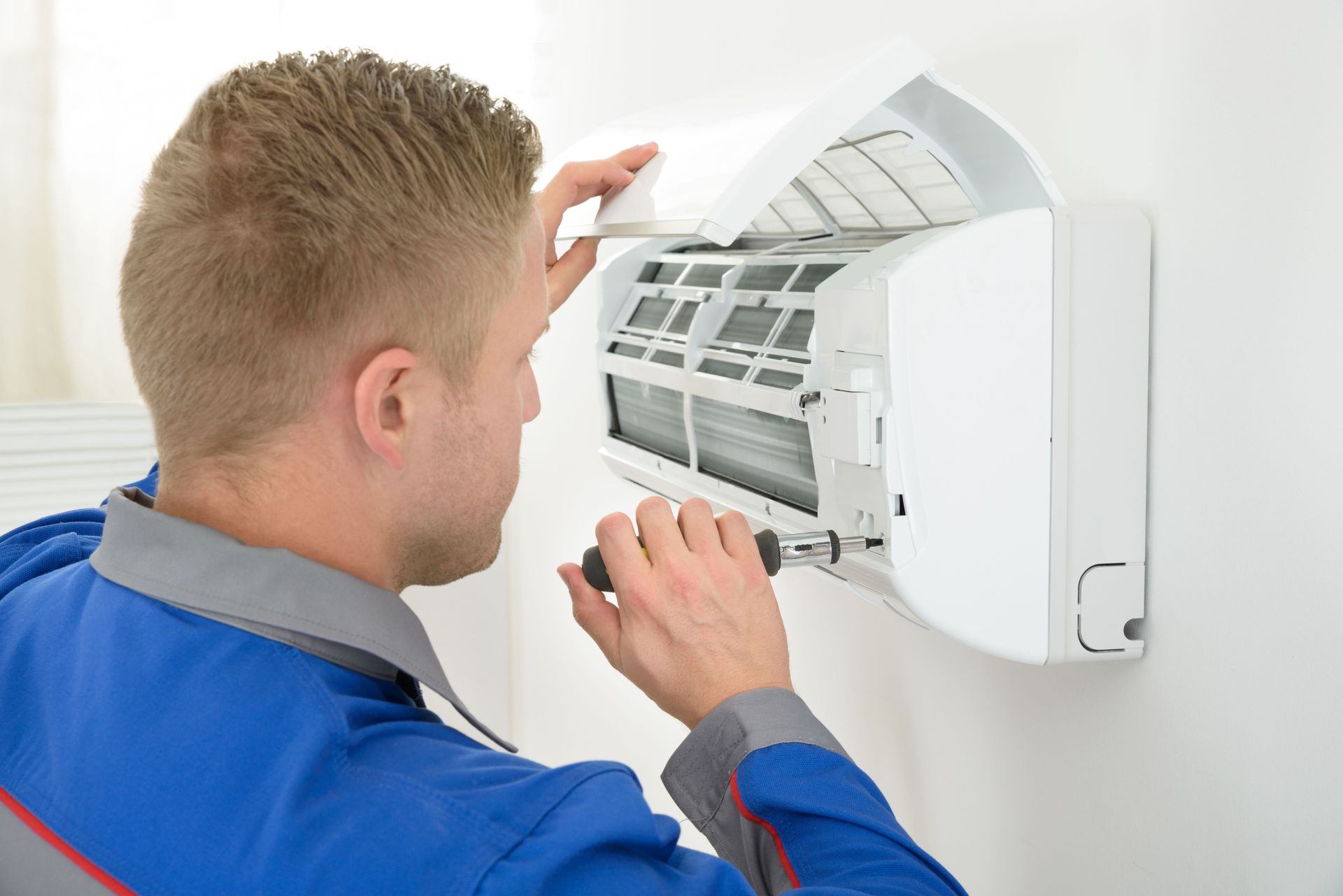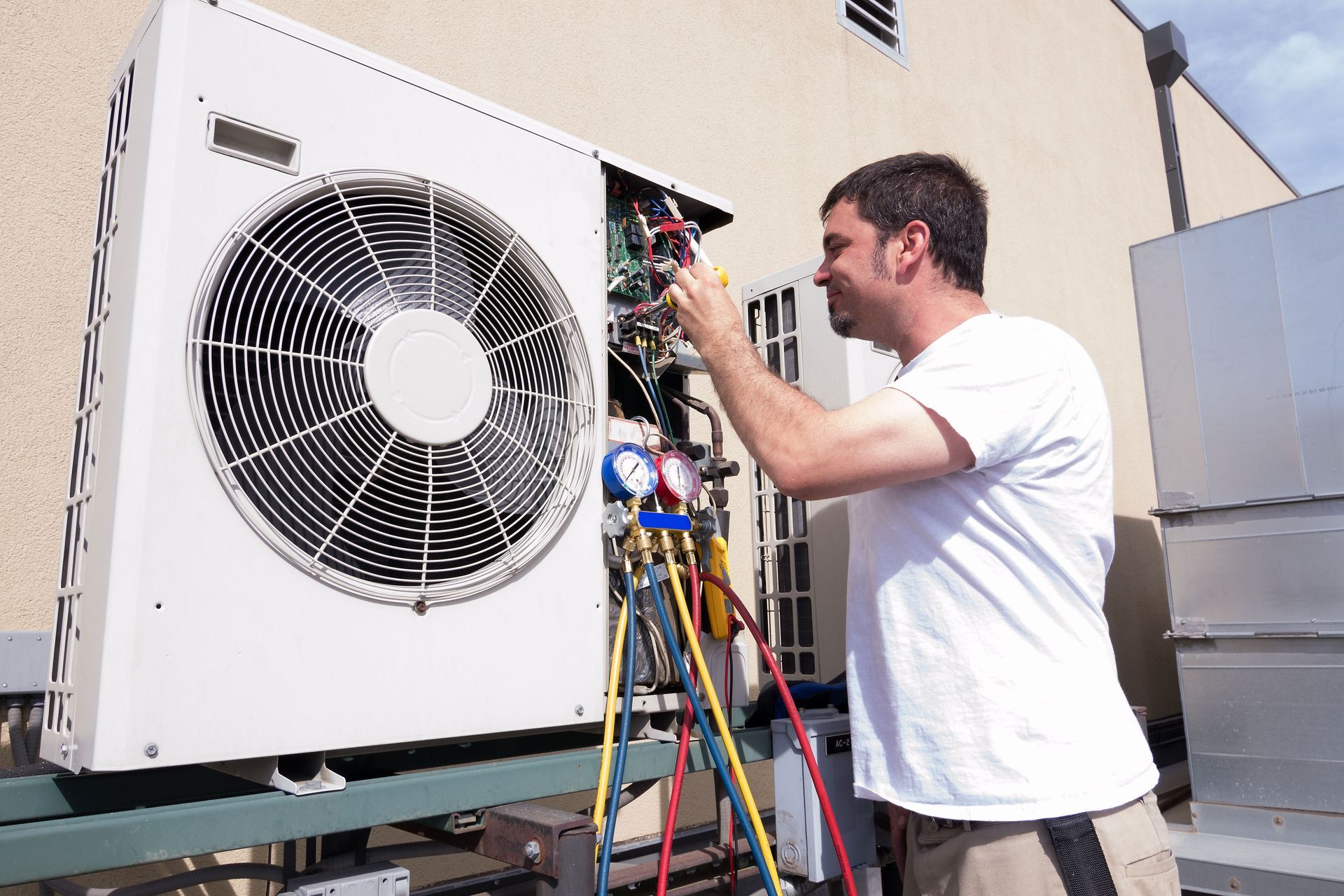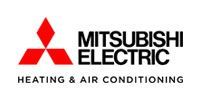October 3, 2025
In recent years, ductless mini-split systems have gained considerable popularity among homeowners and business owners alike. Offering an efficient, flexible, and cost-effective solution for heating and cooling, these systems address many of the limitations of traditional HVAC setups. Unlike central air systems or electric heaters, ductless mini-splits provide targeted climate control without the need for extensive ductwork. This article will explore the workings of ductless mini-split systems, their benefits, cost-effectiveness, maintenance requirements, and who should consider installing them.
How Do Ductless Mini-Split Systems Work?
At the core of a ductless mini-split system is a simple yet highly effective design. Each system typically consists of an outdoor compressor unit and one or more indoor air-handling units. These components are connected by a small conduit, which houses the power cable, refrigerant tubing, and a condensate drain. The indoor units can be mounted on walls, ceilings, or even floors, providing flexible placement options tailored to the space.
The operation of a ductless mini-split is based on a heat exchange process. During heating mode, the system extracts heat from the outdoor air—even in cold conditions—and transfers it indoors. Conversely, during cooling mode, the system removes heat from the indoor air and releases it outside. This process is highly efficient because the system moves heat rather than generating it directly, which is a significant difference from traditional electric heaters.
Another advantage of the ductless mini-split design is zoning. Each indoor unit can be controlled independently, allowing different rooms or areas to maintain different temperatures. This is especially useful in homes or offices where comfort needs vary across spaces. It also contributes to energy savings, as rooms that are not in use do not need to be heated or cooled unnecessarily.
What Are the Benefits of Using a Ductless Mini-Split System?
Ductless mini-splits offer a range of benefits that make them a compelling option for many homeowners and business owners. One of the most notable advantages is energy efficiency. According to Rewiring America, a ductless mini-split is typically two to four times more efficient for heating than other electric heating options and can be approximately 30% more energy-efficient than central air systems. This efficiency translates to lower utility bills and a reduced environmental footprint.
Ease of installation is another significant benefit. Traditional HVAC systems often require extensive ductwork, which can be invasive, costly, and time-consuming to install. In contrast, ductless mini-splits only require a small hole for the conduit between the indoor and outdoor units. This makes them particularly attractive for retrofitting older homes or buildings where adding ductwork would be challenging or disruptive.
Flexibility in zoning and temperature control is another key advantage. Each indoor unit can operate independently, providing precise climate control for each room. This feature allows users to adjust comfort levels according to individual preferences, reducing energy waste by heating or cooling only the spaces in use.
Ductless mini-splits also offer aesthetic and functional flexibility. With compact designs and multiple mounting options, they can blend seamlessly into a room’s décor. Additionally, many models come with advanced features such as programmable timers, remote controls, and air filtration options, enhancing both convenience and indoor air quality.
What Makes Ductless Mini-Split Systems Cost-Effective?
One common concern when considering a ductless mini-split is the initial cost. While these systems can be more expensive upfront than some traditional heating or cooling options, they offer significant long-term savings. Their high efficiency reduces monthly energy bills, which can offset the initial investment over time. In many cases, homeowners and business owners see a return on investment within a few years, depending on usage patterns and local energy costs.
Moreover, ductless mini-splits often eliminate the need for costly ductwork modifications or repairs, which can be a major expense with central air systems. Because each indoor unit operates independently, you can install units only where needed, reducing installation costs for larger homes or buildings. Additionally, the flexibility to heat or cool individual zones means that energy is not wasted on unused spaces, further contributing to long-term cost savings.
When considering cost-effectiveness, it is also essential to factor in durability. Many ductless mini-split systems are designed to last 15 to 20 years with proper maintenance. Their long lifespan helps reduce the need for frequent replacements, further enhancing overall savings. This lifespan, combined with their energy efficiency, makes them an attractive choice for both residential and commercial applications.
What Are the Maintenance Requirements for Ductless Mini-Split Systems?
Maintaining a ductless mini-split is relatively straightforward, especially when compared to traditional HVAC systems. Regular upkeep primarily involves cleaning or replacing filters, inspecting the indoor and outdoor units, and ensuring the conduit remains unobstructed. Most manufacturers recommend cleaning filters every few weeks during periods of heavy use, which helps maintain airflow and system efficiency.
Occasionally, it is necessary to have a professional perform a more comprehensive checkup. This includes inspecting the refrigerant levels, testing electrical components, and verifying that the system operates at peak efficiency. By scheduling routine maintenance, you can prevent minor issues from developing into costly repairs and extend the overall lifespan of your ductless mini-split.
Another maintenance benefit is that ductless mini-splits do not rely on ductwork, which eliminates concerns about leaks, mold, or debris accumulation. This feature not only reduces maintenance requirements but also improves indoor air quality, making the system a healthier choice for homes and workplaces.
Who Should Consider Installing a Ductless Mini-Split System?
Ductless mini-split systems are well-suited for a wide range of users and applications. Homeowners looking to upgrade an older heating and cooling system without extensive renovations will find them particularly appealing. Their ability to provide targeted comfort and energy savings makes them ideal for single rooms, home additions, or spaces that are difficult to heat or cool with traditional HVAC systems.
Commercial properties can also benefit from ductless mini-splits. Small offices, retail spaces, and boutique establishments can take advantage of the zoning capabilities to ensure customer and employee comfort while controlling energy expenses. The system’s flexibility in installation allows businesses to adapt to unique layouts without significant construction costs.
Additionally, individuals with specific heating and cooling needs—such as those sensitive to temperature fluctuations—may find ductless mini-splits to be an ideal solution. The ability to control the temperature in each zone independently ensures comfort without compromising efficiency. Similarly, properties in areas with extreme weather conditions can benefit from the high efficiency of these systems, which deliver consistent heating and cooling year-round.
Finally, ductless mini-splits are an excellent choice for environmentally conscious users. Their energy efficiency reduces both energy consumption and greenhouse gas emissions, making them a responsible option for those looking to minimize their environmental impact.
Ductless mini-split systems offer a versatile, efficient, and cost-effective solution for modern heating and cooling needs. Understanding how they work, their advantages, and the potential for long-term savings can help you determine whether this system is right for your home or business. Their minimal maintenance requirements and flexible zoning capabilities make them a practical option for a variety of spaces and users. By evaluating your specific needs and consulting with a qualified professional, you can make a well-informed decision and enjoy the comfort and efficiency that a
ductless mini-split system provides. If you're looking to upgrade your HVAC system, call the professionals at VisionAiry Heating & Cooling today!






